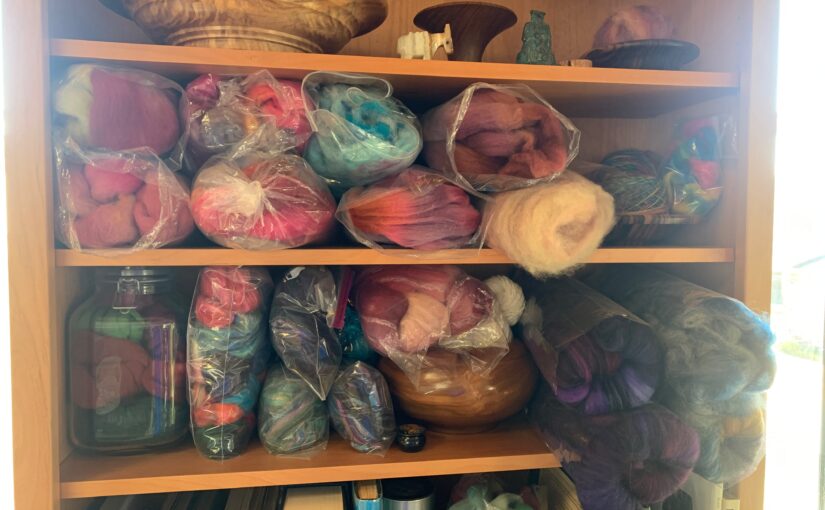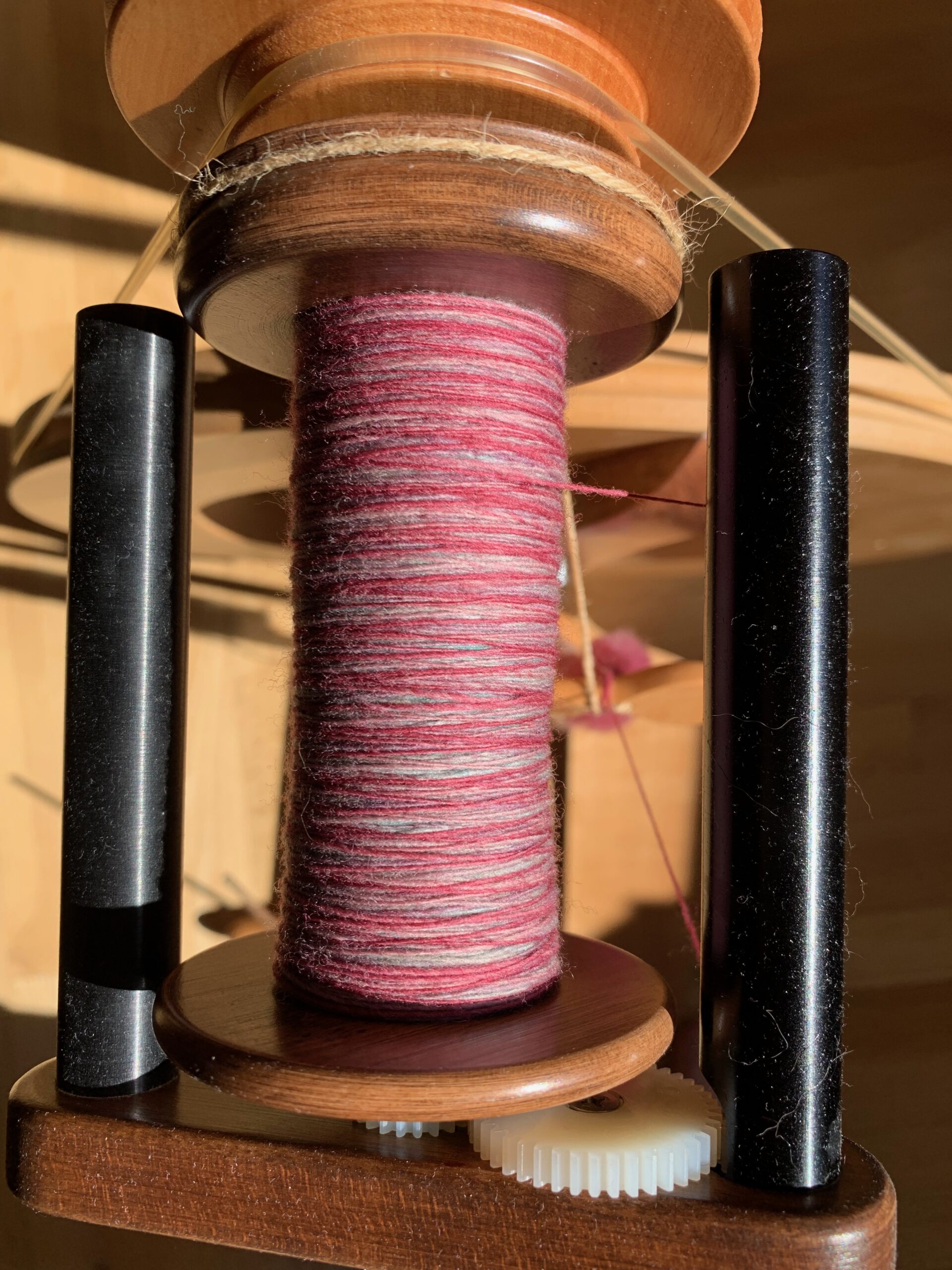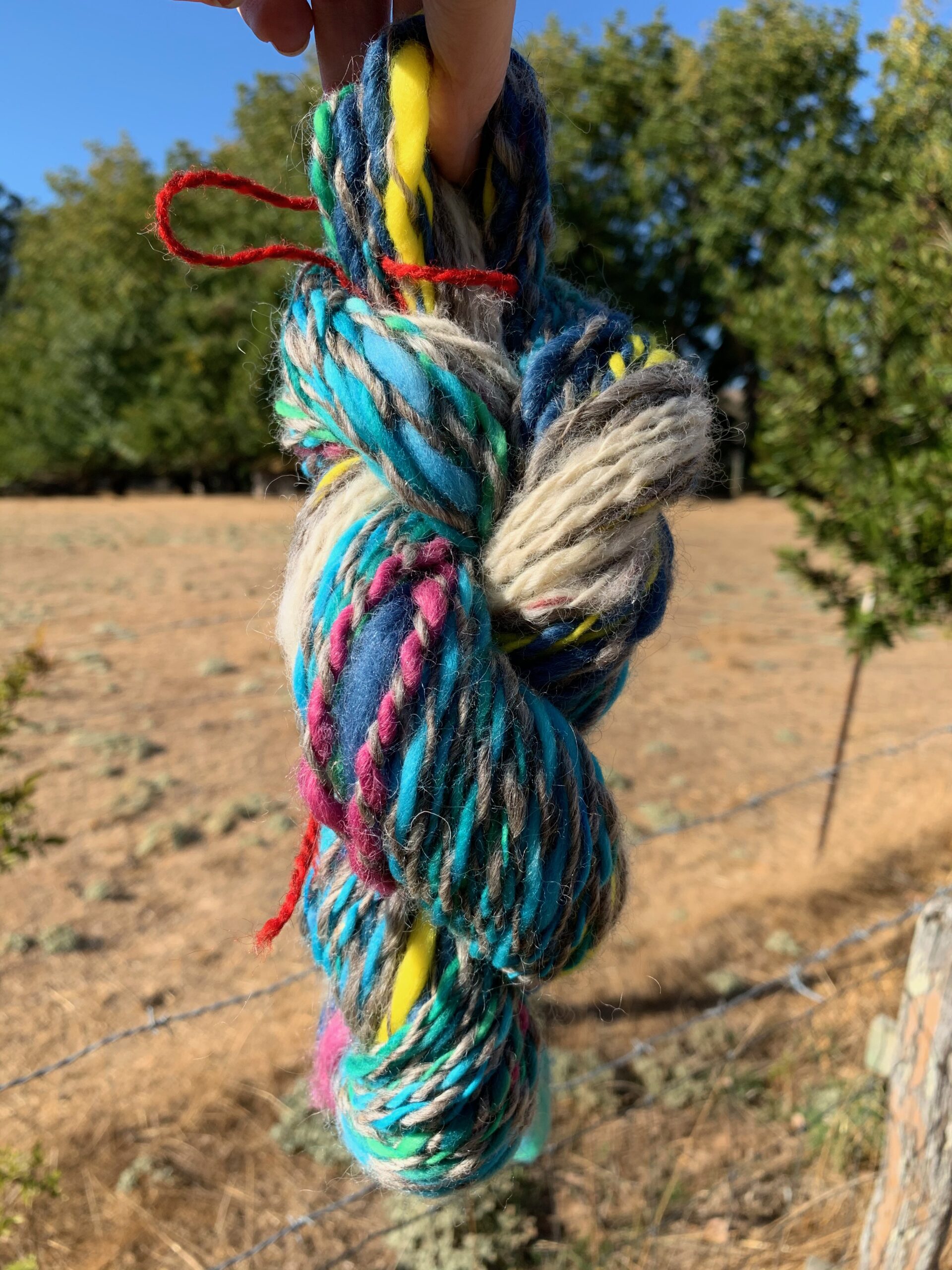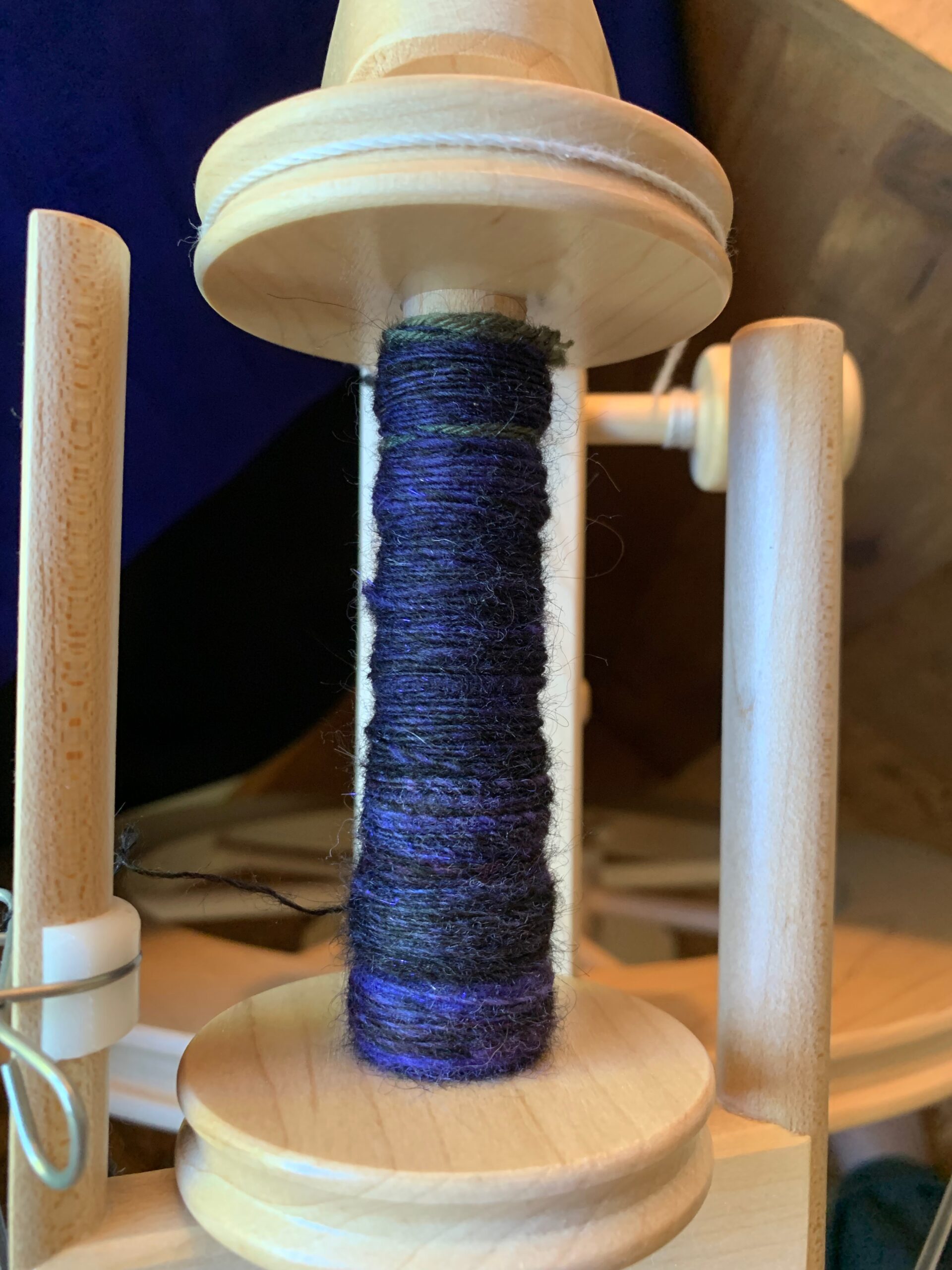One of the crafts I love is spinning yarn. I mostly spin yarn on my wheel now, but I started out on a drop spindle. When I was getting started, I struggled to figure out how to learn, and I couldn’t find anyone to teach me in person. I got a lot of conflicting information, and it was hard to get traction in the noise. I just wanted someone to tell me what information to focus on first, and what kinds of fiber to start with.
Having a few years of experience now, here’s what I wish I’d known when I was getting started.
How to approach learning to spin
If you can’t find in person classes, watch videos of experts spinning
And watch the same videos over again just to see what their hands are doing. I found videos much more helpful than books, because your hands move in 3d and books are flat. I also found that watching videos over again would inspire me to have fun spinning my own yarn.
Buy a wide variety of types of fiber in small amounts
…like 1-2 oz. each. This is like buying your first set of paints. You’re not going to make masterpieces, but you want stuff that’s good enough that you enjoy working with it. If you find brick & mortar stores or fairs, you can touch the fibers before buying them. That was too hard for me, so I bought a bunch of different kinds and got to know them in the comfort of my own home. There are great fiber of the month clubs that send you a small amount of something new each month (see below).
Doodle
My good friend, creativity expert Keiko O’Leary suggests that artists in any medium can doodle as a way to get out of a creativity block. I got so much benefit from “doodling” by spinning up 1/2 oz or less of some fiber, and then plying it with itself and skeining it (and washing and caking). With that small amount of fiber I don’t have to spend time planning a big project, and I’m not committing to something I may not want to finish. But it’s enough to get a sense for what the fiber does when I use different kinds of draws and spin different thicknesses. And it gave me the opportunity to dabble in lots of materials and techniques in a short period of time.
Don’t aim for “consistent”
Lots of advice tells you how to spin consistent yarn, but first, you’re still new, it’s more important to make anything than to try to make it consistent, and second: if you wanted that you could buy it in the store. Variations and slubs make it visually interesting, and are what make handspun worth the effort. Consistent yarn is only important for making fitted clothes, where you need to knit to gauge, but it’s unnecessary for so many other things!
Practice reattaching the fiber a lot
At the start it seems like the scariest thing to have your fiber come apart, but it’s really not. Once you’ve got 3-5 hours of practice under your belt, start using shorter chunks of fiber instead of long ones. Drafting from the fold is a good way to make yourself practice this, because you work with about one staple length at a time.
When I was an inexperienced driver, I was perfectly capable at driving on roads and parking forwards, but I couldn’t back into a parking spot to save my life. One day I decided that I was going to back into my parking spot at work every day until I got really comfortable at it, and now I can even back my partner’s Ford F150 into parking spaces without too much worry! You can do the same thing with reattaching the fiber, and then you’ll never panic when it comes apart.
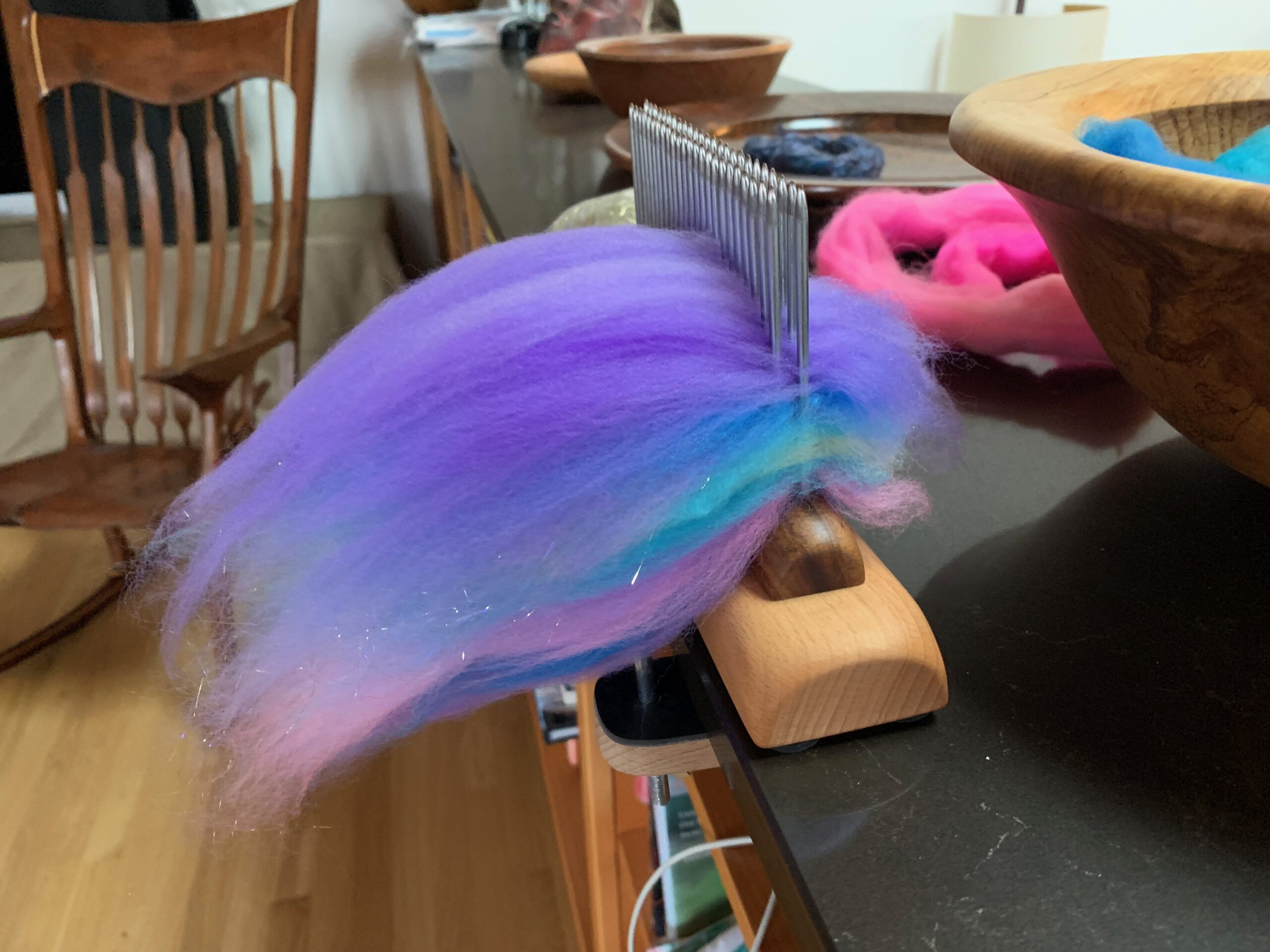
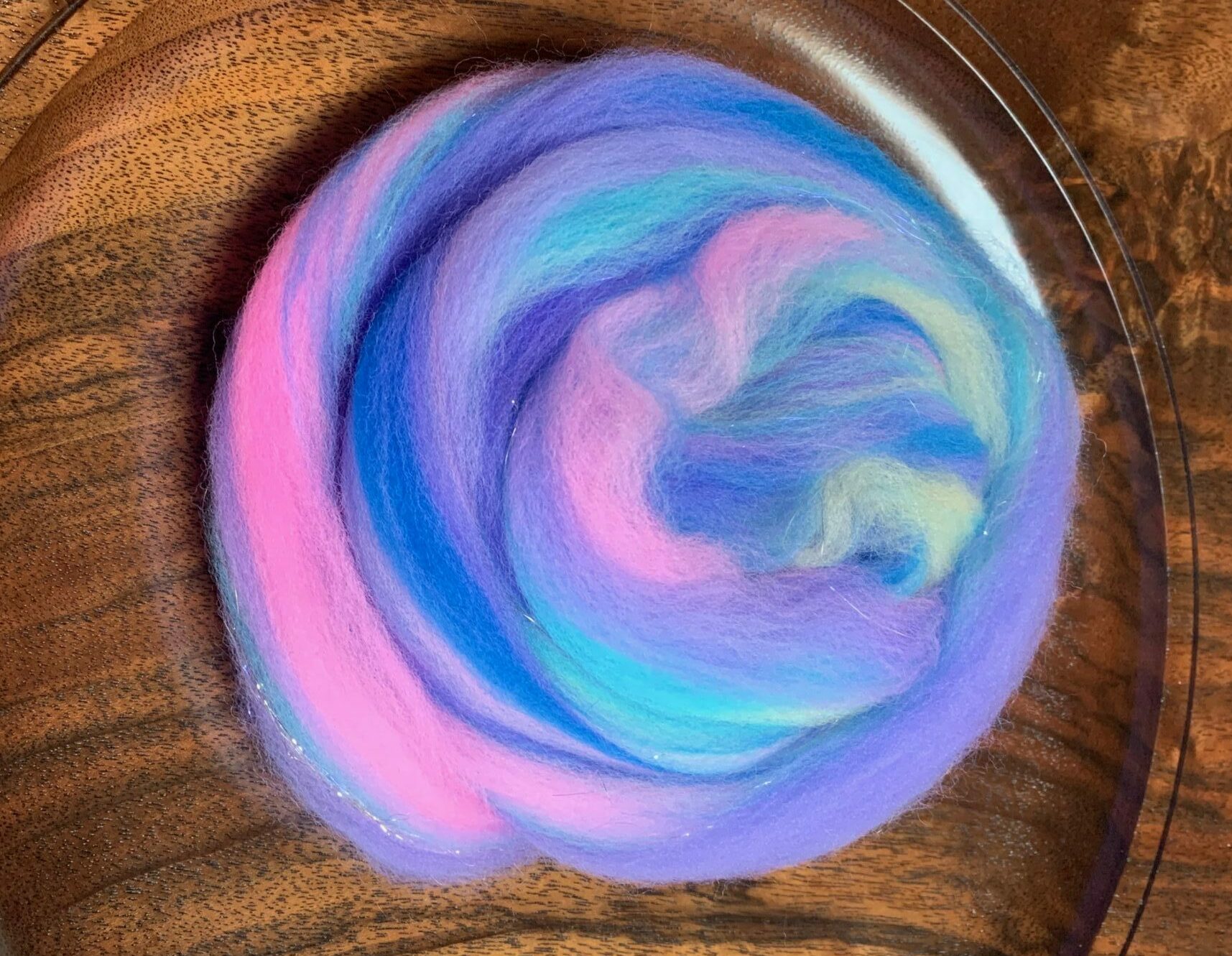
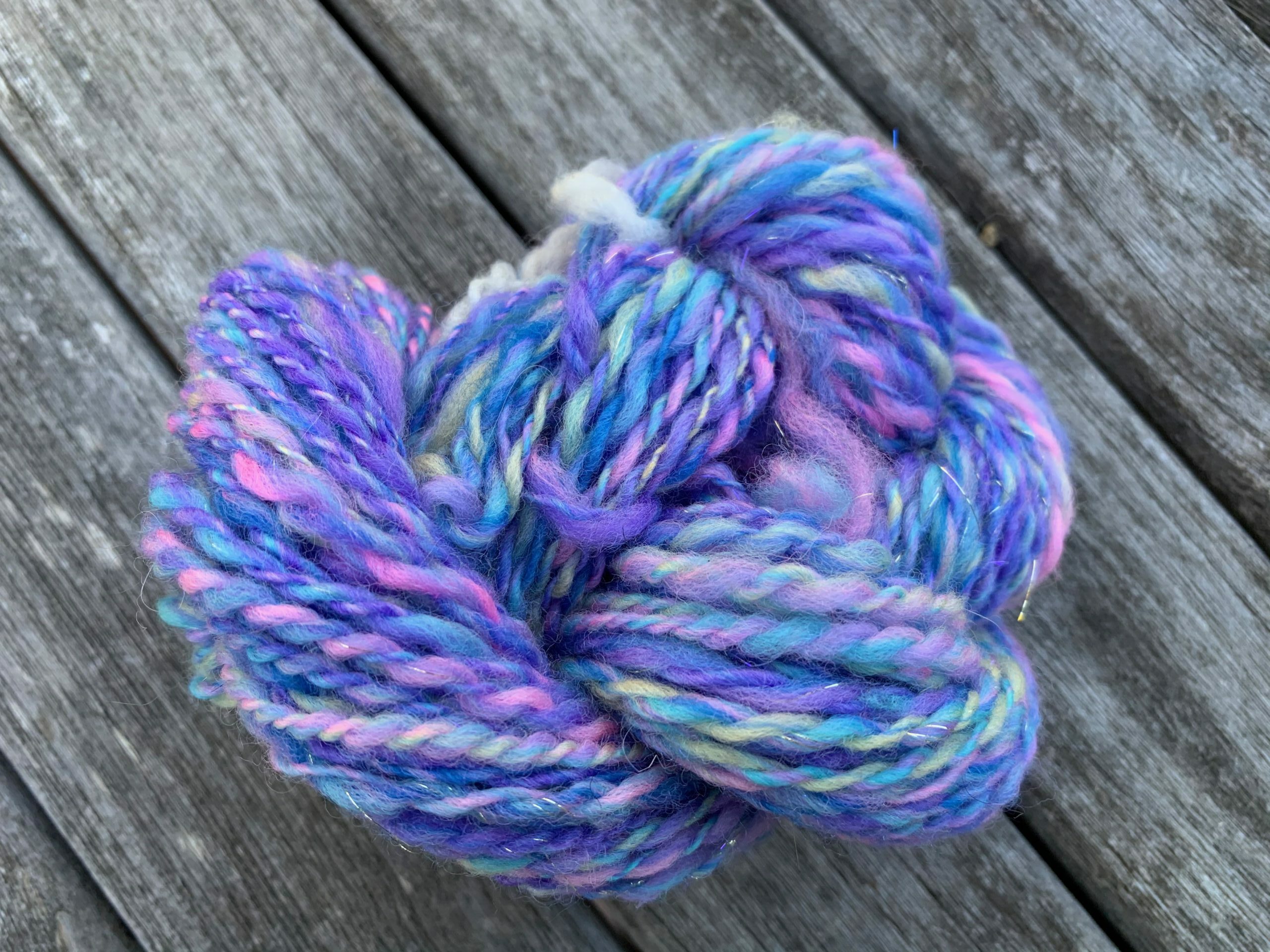
Experts, Books, Classes, Magazines, Groups
Experts
For drop spindling, Abby Franquemont is the master. She grew up spinning, she teaches spinning, and she’s just excellent at it. I watched Respect the Spindle several times over, and she has videos on youtube and a ton of articles. (Respect the Spindle is also a book. I recommend either or both, depending on how you learn best.)
Maggie Casey is another master of all things spinning, but she’s slightly less passionate about drop spindles than Abby F. Her class Getting Started on a Drop Spindle is invaluable and insightful. And for free she has a slightly shorter class called The Spinning Teacher with Maggie Casey that I would check out.
Classes & Books
Craftsy.com has half-a-dozen spinning classes, most of which I’d recommend (I got an annual subscription that I’ll probably let lapse). Long Thread Media acquired all the spinning materials that Interweave Press used to publish, and I trust anything they put out.
After spinning for a couple of years on the spindle (and never getting past park-and-draft), I took a two-afternoon in-person wheel spinning class, where they had wheels to borrow, so I could decide if I was going to enjoy it enough to be worth spending nearly a thousand dollars on a good wheel. The answer was yes! I loved it. I also benefited from all that time with the drop spindle, because I learned the wheel much faster.
A lot of the videos and books out there are for spinning wheels. I avoided them at first, because I didn’t know how much it would translate. The answer is: it does translate, but wheel spinners have more hands because their feet are causing the spinning. With a spindle, your hands are drafting and spinning.
Magazines & Books
For magazines, I love PLY magazine because it’s full of real people writing about how to do the things they’re passionate about. I also subscribe to Spin-Off, but I find it to be shallower and less instructive.
As you develop a bit of skill, books like Yarnitecture and Dyeing to Spin and Knit are both great at helping you think about spinning. I have no intention to learn how to dye (…yet ????), but it helped me think about what to do with dyed fibers.
The Spinner’s Book of Fleece or other fiber guides are helpful to explain what all the choices are. There are a ton of rare breeds that are harder to get, but give unique textures. (This is the other reason I got annoyed at merino: there are plenty of other options!!)
Facebook groups
- Spinning Fibers, which is very active but all kinds of spinners
- Twisted People-Drop Spindling, which is less active but specifically for spindle spinners
Equipment
Your First Spindle
What should your first spindle be? I recommend getting one with a decently heavy whorl, not one of the light decorative ones. Get one top-whorl and one bottom-whorl. Learn park & draft first. (I still park & draft on the spindle. No shame.) Schacht has a spindle that’s a decent workhorse, easy to find, and easy to learn on. It comes in two sizes. Eventually you’ll want both sizes.
Other useful equipment, in order of importance (IMO)
- A ball winder (they actually wind cakes, not balls, but you use them the same)
- A niddy noddy to wind skeins (or you can use a chair)
- I also really like having a yarn swift, especially this flat-pack kind that doesn’t take up a lot of space
- You’ll also want a decent size basin (or a big soup pot) to wash & finish your yarn
- I recommend SOAK yarn wash, because you don’t have to rinse it out, and it’s designed for handmade textiles. (I still haven’t finished my first full-size bottle that I bought 8+ years ago)
- A kitchen scale to weigh your finished plies & skeins
- Scrap yarn to tie your skeins securely
- A yarn gauge to measure its finished diameter
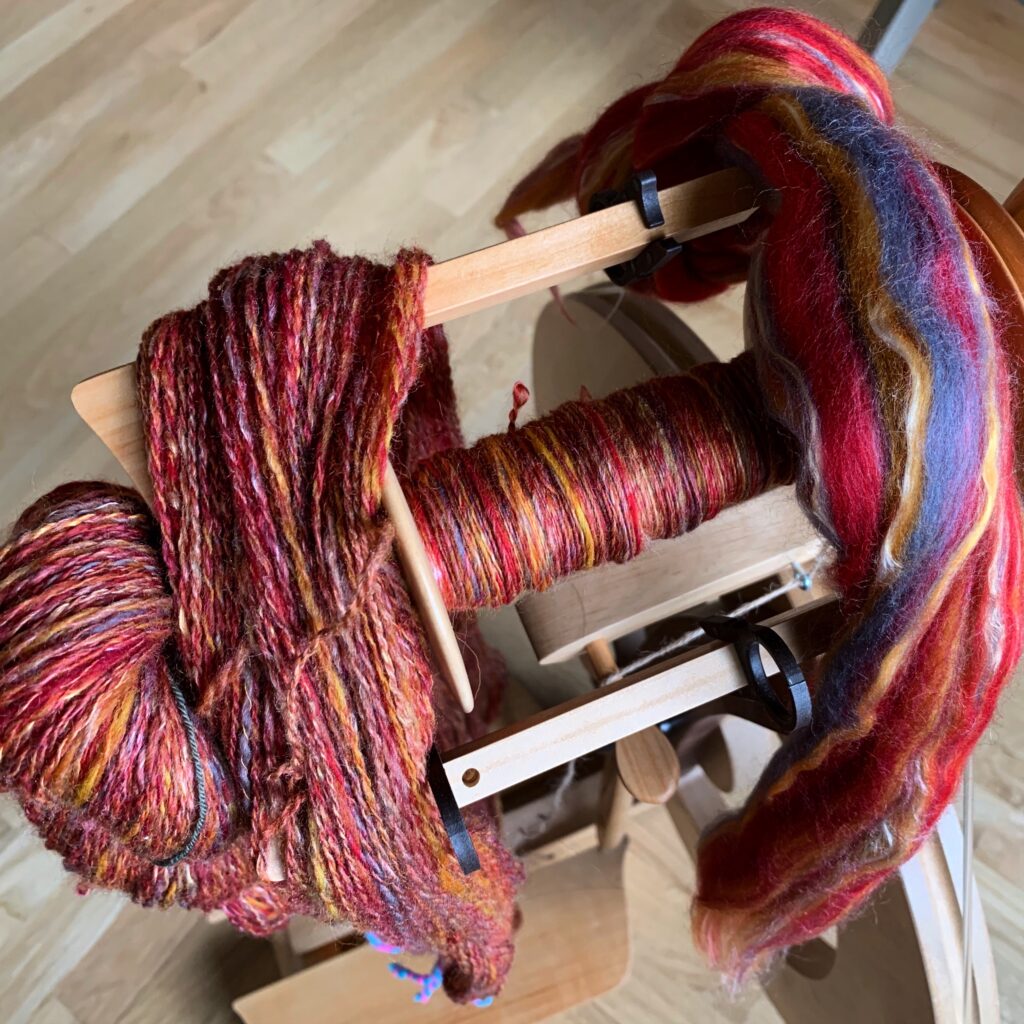
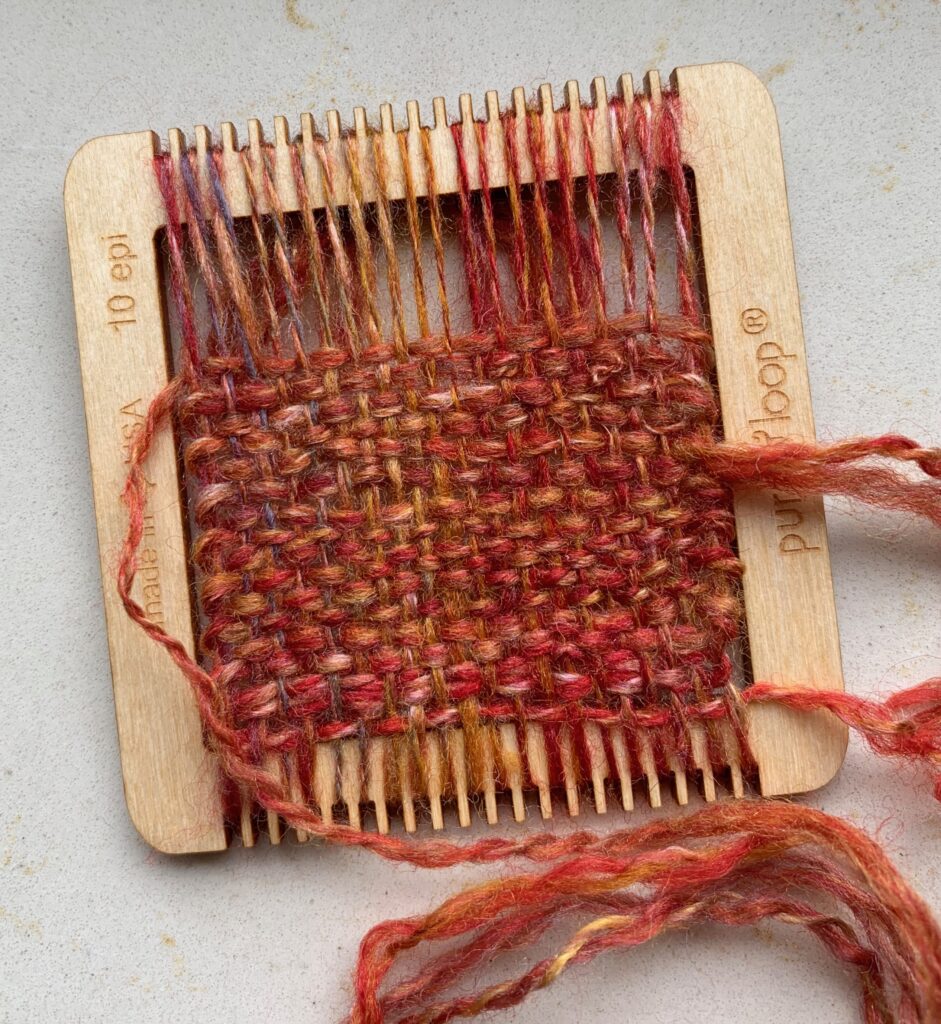
Fiber
For your first fiber… My first roving was troublesome because it was matted and needed more pre-drafting than I knew how to do yet. I’d probably get an undyed merino, or some kind of combed wool top. Dying often felts it a bit (or a lot!), which makes it hard to work with. Get 1-2 oz each of a variety of fibers, and feel free to give up on anything that’s too frustrating. You can try again later, but learning is easier when it’s fun ;).
My favorite sources of fiber:
- Paradise Fibers (or any other fiber of the month club, but I really adored theirs!)
- Calico Farm Fiber Art on Etsy (for a while they sold “Calico Farm’s Big Ass Fiber-tivity Club 3 Month Subscription“, and they sent me 12 oz each of three really different, incredibly gorgeous, truly inspiring batts. Next time I’m running low on fiber I’m going to reach out to them again!)
- The Woolery also sells a good variety of breeds & preps. They’re also where I bought my rigid heddle loom and both of my spinning wheels.
- Nest Fiber Studio has a fiber of the month club that I’ve really enjoyed, too.
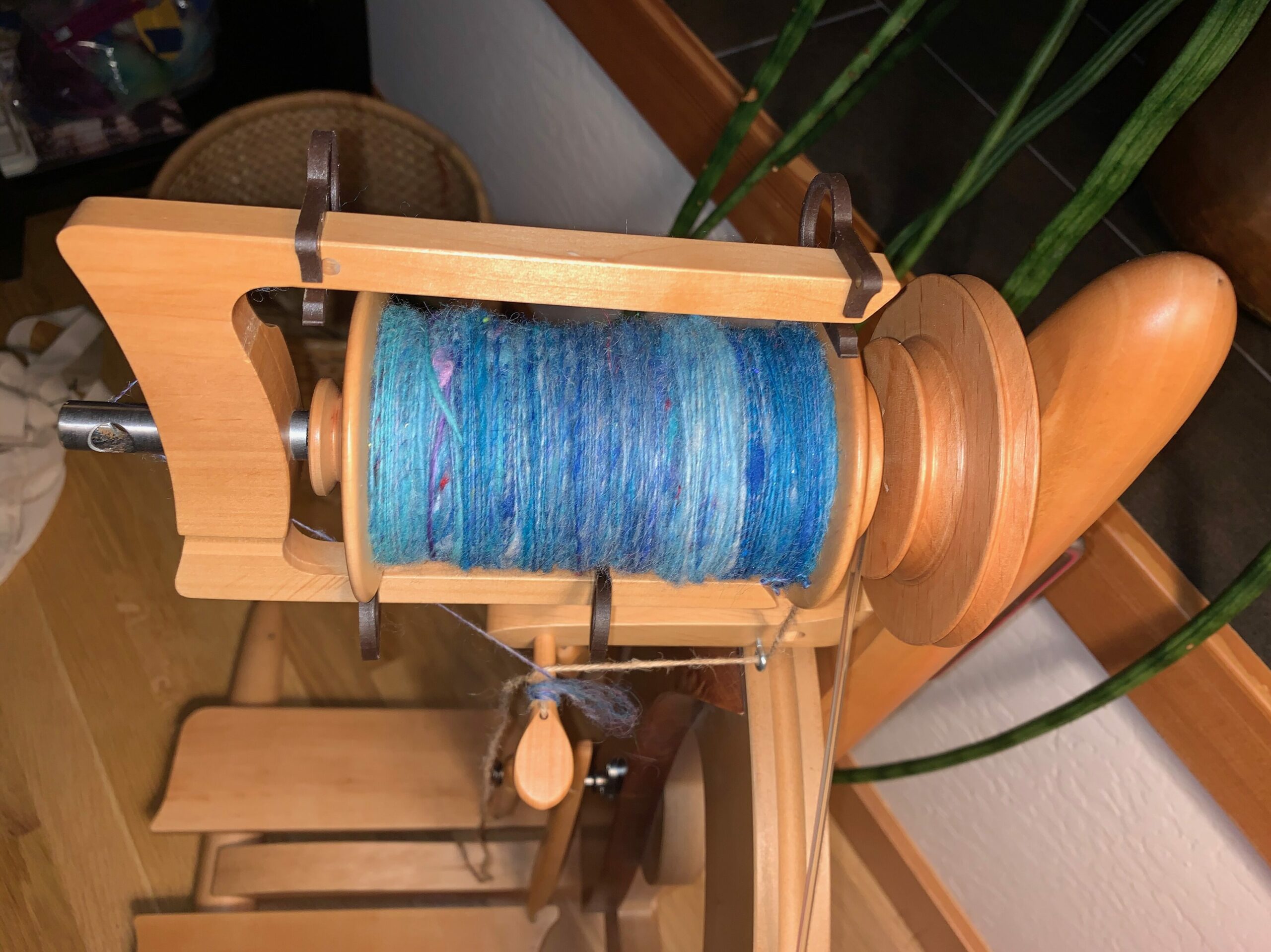
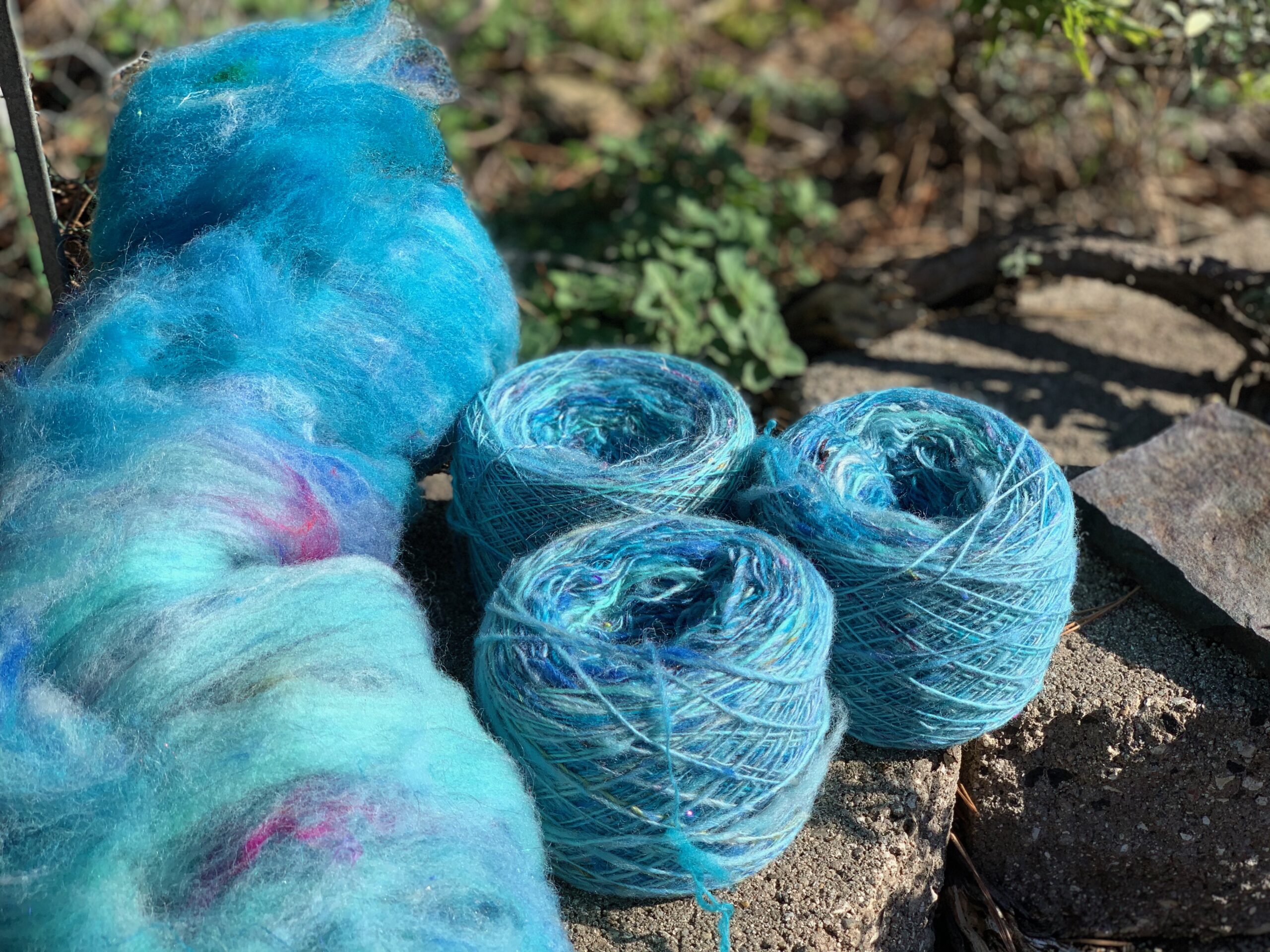
Fibers:
- Merino is boring IMO, but you’ll find it everywhere (often dyed into gorgeous colors).
- I like cormo (it’s so fluffy and soft).
- Sheep/alpaca blends are lovely … alpaca comes in gorgeous browns & is also very soft.
- I also really like many of the multi-colored combed top that Paradise Fibers sells, because they’re fun and pretty, and are usually made up of different fibers and colors in innovative combinations.
Some quick definitions:
- top is a worsted prep, which is combed so all the fibers go in the same direction and will draft easily, but also will pack more tightly.
- roving is a woolen prep, which means it’s carded and the fibers go in more directions and will encourage more air pockets, but can be harder to draft.
- batts are a carded prep that produces a big rectangle of fiber, which you have to pull apart into your own rolags, fauxlags, roving, or however you’d like to use it.
Additional Advice
When the fiber is attached to the spindle, there’s no need to hold it super tightly or work hard to control where the twist goes. It won’t get as gnarled as you fear, even if you let go. To start just hold it gently enough that the fiber can move, and don’t worry about the thins and thicks too much.
It’s your fiber and your yarn. You don’t have to make it the way anyone else says, or make it perfectly on the first try. If you don’t like what you just spun, you can break off the part you don’t like, throw it away (I always just drop it on the floor to clean up later :p), and reattach the fiber to keep going. If it’s overtwisted, you can just untwist it with your fingers, or draft more fiber to take up some of that extra twist. You can even run your singles back through your spindle or wheel to add or remove twist across the whole thing. No one will ever know!
If you’re coming from a craft that uses yarn, you’ll suddenly learn that there isn’t really a single thing called “sheep wool”. Different breeds of sheep produce incredibly different kinds of wool with different staple length, crimp, and thickness, all of which impact what your finished product looks like, how sturdy it is, and how soft it feels. You thought you were going to spin “yarn”, but the number of choices you have can be overwhelming.
All the classes will tell you to look at your fiber and notice its properties and learn how to anticipate the end result. This is great once you know what you’re doing, but while you’re still learning how to spin, it’s irrelevant. To start, just doodle and pay attention to whether you like it or not. Familiarity will come from exposure, not from trying too hard. When I started, I had to let go of the idea that I was going to make yarn that would be suitable for a specific project, because I just didn’t have the knowledge to make all the right choices. If you decide to just make yarn for its own sake, you’ll learn a lot and eventually be able to make what you want.
